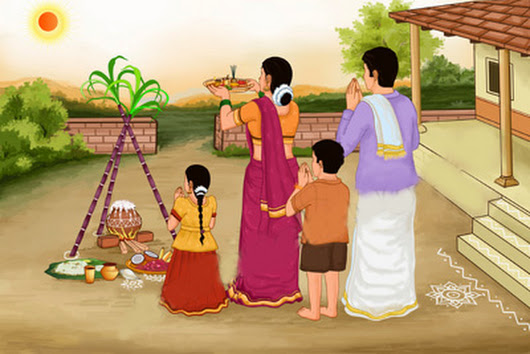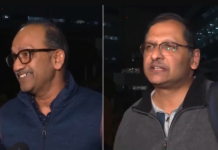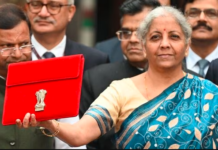Pongal is a harvest festival observed in the southern part of India with great joy. It’s a 4-day long celebration that usually takes place between January and February. Much like Thanksgiving in America, the festival of Pongal in South India is an occasion to express gratitude and give thanks to nature for the bountiful harvest in fields.
Pongal is derived from the term Ponga which means overflowing. The reason behind this name is that the festival has a tradition of cooking new rice in pots until they overflow. This is a symbol of peace and prosperity for which the Almighty is thanked and blessings are sought for a prosperous future.
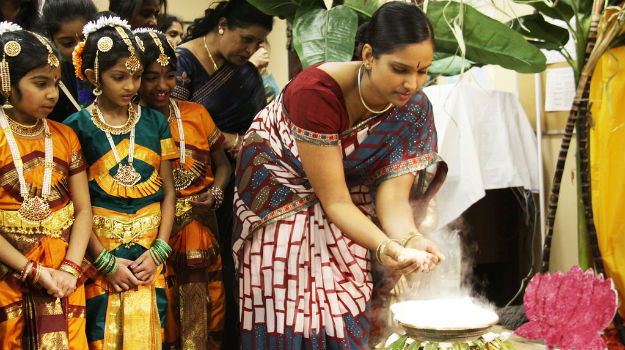 Source: India.com
Source: India.com
History of Pongal
Owing to the cultural diversity of India, this harvest festival is celebrated across the country in different manners, each having a different story and theory behind it. For South Indians it’s Pongal, for North it’s Lohri and for East, it’s Magha Bihu. Talking about South, the festival has originated as a Dravidian festival and is believed to be associated with the story of Govardhan Parvat as well the legendary stories of Lord Shiva and Nandi.
Celebrations of Pongal
As it’s a four-day festival, the celebrations go on for 4 days each having a set of activities and customs performed by people. The first day is known as Bhogi festival when Lord Indra is paid homage for the abundance of harvest. Girls dance around bonfire and sing songs praising the lord. People also burn agricultural waste to keep themselves warm in the last lap of winter.
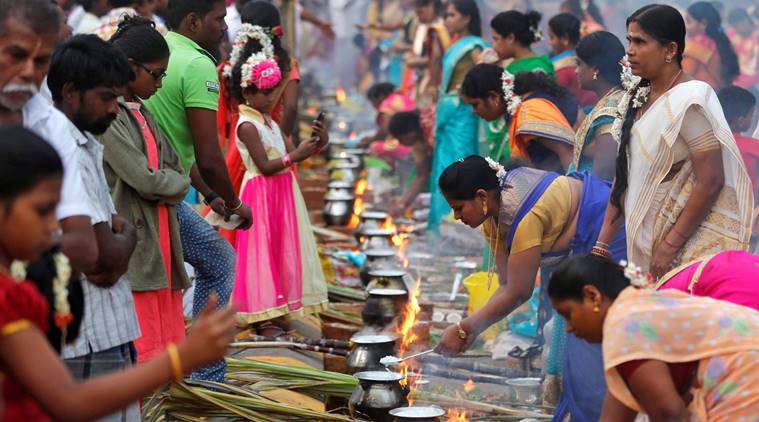 Source: Indian Express
Source: Indian Express
On the second day, the ceremonial worship is performed and rice is boiled in earthenware pots and then symbolically offered to Sun God. A turmeric plant is tied to the pot and offerings are given in the form of sugarcane, bananas, and coconut. Everyone dresses up in traditional attire and the women draw kolam, a drawing in white lime, in their houses.
The third day is known as Mattu Pongal, a day for worshipping and decorating cows. People first decorate their cattle with tinkling bells, multi-colored beads, flower garlands and sheaves of corn and then worship them. Then they are fed with Pongal and taken to village centers where race and other activities are held while the public gathers and enjoy.
The day is associated with cattle because of the theory related to Lord Shiva and his bull Basava. Once he asked his bull to ask the mortals of earth to get an oil massage and bath everyday and eat once a month. However, the bull told them to eat daily and take bath once a month. This enraged the lord and he banished the bull on earth to plough the fields and help humans grow food.
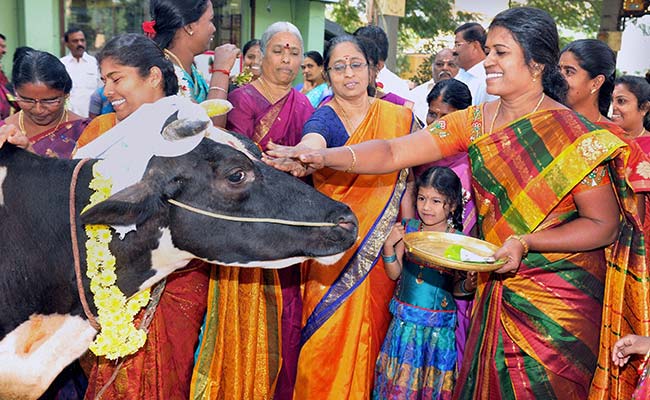 Source: NDTV
Source: NDTV
Finally, on the fourth day, i.e. Kannum Pongal is observed when women worship and perform rituals, seeking the prosperity of their brothers. The females of the house assemble in the courtyard and place the turmeric leaf and worship with things like rice, limestone, and turmeric water.


